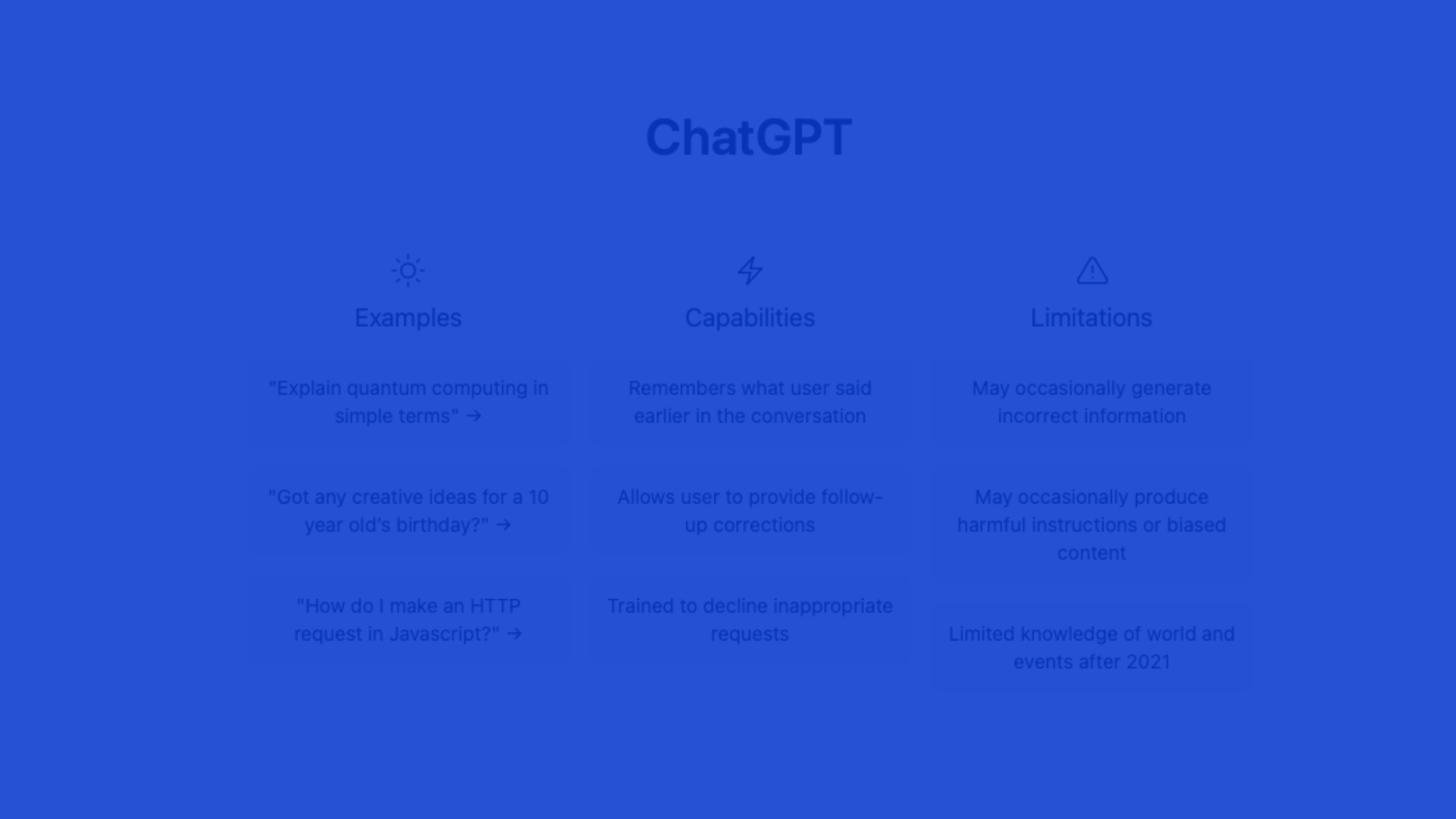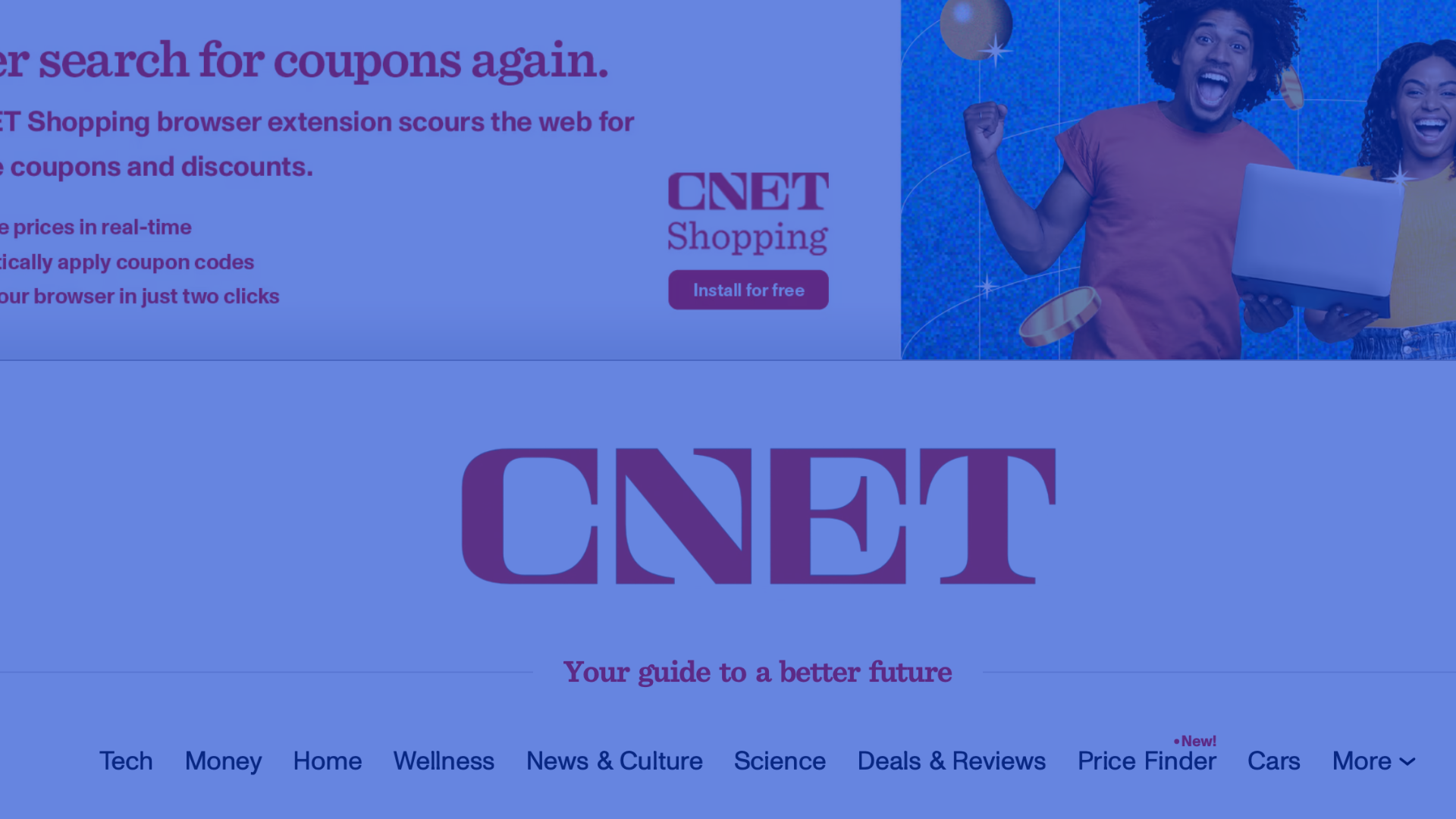As we head into 2023, it’s clear that the digital marketing landscape is undergoing a major transformation. From the rise of user-generated content and the increasing use of artificial intelligence tools, to the emergence of short educational videos and the incorporation of interactive website features, the face of digital marketing is rapidly changing.
In this article, we will explore some of the top digital marketing trends for 2023, as well as provide some predictions for how these trends will shape the industry in the coming year. From the perspective of a marketing agency, we will examine both B2B and B2C trends and how they might affect businesses of every size and in every digital market.
As digital marketing continues to evolve, it’s important that businesses stay agile and responsive in order to maximize their success. Companies should constantly seek out new trends in order to stay ahead of the competition and provide a great customer experience. Additionally, they should pay attention to user feedback and use it to inform their approach going forward. By embracing these changes now, companies can create a strong foundation for success in the future.
As we head into 2023, it’s clear that the digital marketing landscape is undergoing a major transformation. Here are some of the key trends to watch out for:
User-Generated Content
User-generated content (UGC) refers to any form of content that is created and shared by users, rather than a brand or organization. This can include reviews, ratings, photos, videos, social media posts, and more.

Why User Generated Contents?
User-generated content has become an increasingly popular marketing tool for businesses, and there are several reasons why. First and foremost, UGC is often more authentic and relatable than content created by brands. It’s not uncommon for consumers to be skeptical of marketing messages, but when they see real people sharing their experiences with a product or service, it can be much more convincing.
UGC also has the potential to go viral, which can be a powerful way to reach a wider audience, typically video contents via reels to massively viral. When people share user-generated content, they are essentially promoting your brand to their own network of friends and followers, this has lead to the rise of influencer marketing.
Finally, UGC can be a cost-effective way to generate content for your marketing efforts. Rather than spending time and resources creating content in-house, businesses can leverage the content that their customers are already creating.
Psychology and User Generated Contents
There are several psychological factors that contribute to the effectiveness of user-generated content. For one, people are more likely to trust the recommendations of their peers than they are to trust marketing messages from a brand. Seeing that other people have had positive experiences with a product or service can provide a sense of social proof and increase the likelihood that others will try it as well.
Another psychological factor at play is the idea of self-determination. When people contribute their own content, they feel more invested in the brand and are more likely to engage with it in the future. This sense of ownership can drive loyalty and create a sense of community around a brand.
Ads and User Generated Contents
User-generated content can also be used in paid advertising campaigns. By using UGC in your ads, you can tap into the same psychological factors that make it so effective in organic marketing efforts. Seeing real people using and enjoying your product can be a powerful way to persuade potential customers to take action.
There are a few different ways that businesses can incorporate user-generated content into their ads. One option is to use user-generated photos or videos in display ads or social media ads. Another option is to use user reviews or ratings as social proof in your ads. Whatever approach you choose, be sure to get permission from the user before using their content in your marketing efforts.
In conclusion, user-generated content is a powerful tool for businesses looking to build trust, engage with their audience, and drive conversions. By leveraging the content that their customers are already creating, businesses can create authentic, engaging marketing campaigns that deliver real results.
In 2023, we expect to see an increase in the use of user-generated content as one of the biggest trends in digital marketing. This trend is driven by the increasing importance of authenticity and the desire for more visual content, such as photos and videos, from consumers. User-generated content can also be helpful in providing valuable information and insights to potential customers.
As a result, businesses will likely allocate a larger portion of their marketing budget towards content creation and may even consider hiring dedicated content creators to manage this aspect of their marketing strategy. By incorporating user-generated content into their marketing efforts, businesses can showcase the real-life experiences and perspectives of their customers, which can help to build trust and credibility with their target audience.
Artificial Intelligence Tools
Artificial intelligence (AI) tools are software programs designed to mimic human intelligence and perform tasks that would normally require human intervention. In the world of digital marketing, AI tools are being used to help businesses deliver personalized, seamless experiences to their customers.
Why Artificial Intelligence Tools?
There are several reasons why businesses are turning to AI tools in their marketing efforts. One of the main benefits of AI is its ability to process and analyze large amounts of data quickly and accurately. This can help businesses to better understand their customers, identify patterns and trends, and make more informed decisions about their marketing strategies.
AI can also help businesses to deliver more personalized experiences to their customers. By using machine learning algorithms and other AI technologies, businesses can tailor their marketing efforts to the needs and preferences of individual customers. This can lead to higher conversion rates and increased customer loyalty.
AI tools can also help businesses to save time and resources. By automating tasks such as data analysis and customer service, businesses can free up their human employees to focus on more complex, high-value work.
Types of Artificial Intelligence Tools
There are many different types of AI tools that are being used in the world of digital marketing. Some of the most common include:
- Chatbots: Chatbots are AI-powered virtual assistants that can communicate with customers through messaging apps or live chat on a website. They can be used to answer frequently asked questions, provide customer support, and even make recommendations based on a customer’s past interactions with the brand.
- Virtual assistants: Virtual assistants are AI-powered programs that can perform tasks such as scheduling appointments, sending emails, and making phone calls on behalf of a business.
- Machine learning algorithms: Machine learning algorithms are used to analyze data and make predictions based on that data. In the context of digital marketing, these algorithms can be used to predict customer behavior, identify patterns and trends, and optimize marketing campaigns.
- AI-generated content: AI-powered software can be used to generate content such as social media posts, email marketing campaigns, and more. This can be a cost-effective way for businesses to create high-quality content without investing as much time and resources. GTP-4 from OpenAI is rumoured to go live in 2023, and it will be ground breaking for digital marketing.
Benefits of Artificial Intelligence Tools
There are several benefits to using AI tools in your marketing efforts. Some of the main benefits include:
- Increased efficiency: By automating tasks such as data analysis and customer service, AI tools can help businesses to save time and resources.
- Improved customer experiences: AI tools can help businesses to deliver more immersive personalized experiences to their customers, leading to higher conversion rates and increased customer loyalty.
- Enhanced decision-making: By analyzing large amounts of data quickly and accurately, AI tools can help businesses to make more informed decisions about their marketing strategies.
- Cost-effectiveness: AI tools can be a cost-effective way for businesses to create high-quality content and optimize their marketing campaigns.
In conclusion, artificial intelligence tools are becoming an increasingly important part of the digital marketing landscape. By leveraging the power of AI, businesses can deliver more personalized, efficient experiences to their customers and drive better results.
Short Educational Videos
As we look towards 2023, it’s clear that short educational videos are set to be a key trend in the world of digital marketing. These videos, which are typically under a few minutes in length, offer businesses a quick and easy way to share valuable information with their audience.
Why Short Educational Videos?
There are several reasons why short educational videos are so popular in digital marketing. One of the main benefits is their ability to capture and hold the attention of viewers. With so much competition for attention online, it’s important to have a format that is engaging and easy to consume. Short educational videos are perfect for this, as they are easy to understand and don’t require a lot of time or effort to watch.
Another reason why short educational videos are so popular is their versatility. These videos can be used on a variety of platforms, including social media, websites, and email marketing campaigns. This makes it easy for businesses to reach their audience no matter where they are.
Finally, short educational videos are a great way for businesses to showcase their expertise and build trust with their audience. By sharing valuable information with their customers, businesses can position themselves as thought leaders in their industry and establish themselves as a reliable source of information.
Examples of Short Educational Videos
There are many different types of short educational videos that businesses can use in their marketing efforts. Some examples include:
- How-to videos: These videos show viewers how to do something, such as how to use a product or service.
- Product demonstrations: These videos show viewers how a product or service works and the benefits it offers.
- Tutorials: These videos provide step-by-step instructions for completing a task or achieving a specific goal.
- Explainer videos: These videos provide a high-level overview of a concept or topic, helping viewers to quickly understand complex ideas.
- Interviews: These videos feature experts or industry leaders discussing a specific topic or offering their insights and advice.
Tips for Creating Effective Short Educational Videos
If you’re thinking about using short educational videos in your digital marketing efforts, here are a few tips to help you create effective videos:
- Keep it short and sweet: As the name suggests, short educational videos should be brief and to the point. Aim for videos that are a few minutes in length or less.
- Make it visually appealing: Use graphics, animation, and other visual elements to make your videos more engaging.
- Use a clear, concise script: Use a script that is easy to understand and gets straight to the point. Avoid using jargon or complex language that might be confusing to viewers.
- Use a consistent branding style: Make sure your videos match your brand’s style and tone. This will help to create a cohesive look and feel across all of your marketing materials.
In conclusion, short educational videos are a powerful tool for businesses looking to engage with their audience and build trust in the digital marketing space. By creating high-quality, visually appealing videos that share valuable information with their customers, businesses can position themselves as thought leaders in their industry and drive better results in 2023 and beyond.
Interactive Website Features
As businesses continue to rely on their online presence to connect with customers, interactive website features are becoming an increasingly important part of the digital marketing landscape. These features, which can include chatbots, live chat, online quizzes, and more, help to make websites more dynamic and engaging, improving the user experience and increasing the likelihood of conversions.
Why Interactive Website Features?
There are several reasons why businesses are incorporating interactive website features into their marketing efforts. One of the main benefits is their ability to engage with visitors and keep them on the website longer. By providing a more interactive experience, businesses can keep visitors interested and increase the chances that they will take a desired action, such as making a purchase or filling out a form.
Interactive website features can also help businesses to gather valuable data about their visitors. By using chatbots or live chat, businesses can ask targeted questions and gather information about their customers’ needs and preferences. This data can be used to improve the user experience and inform marketing efforts.
Finally, interactive website features can help businesses to stand out from the competition. With so many businesses vying for attention online, it’s important to have a website that stands out and provides a unique experience for visitors.
Examples of Interactive Website Features
There are many different types of interactive website features that businesses can use to engage with their audience. Some examples include:
Chatbots: Chatbots are AI-powered virtual assistants that can communicate with visitors through live chat or messaging apps. They can be used to answer frequently asked questions, provide customer support, and even make recommendations based on a visitor’s past interactions with the website.
- Live chat: Live chat allows businesses to communicate with visitors in real-time through a chat window on their website. This can be a great way to provide customer support and gather valuable data about visitors.
- Online quizzes and polls: These interactive features allow visitors to engage with the website in a fun and informative way. Quizzes can be used to gather data about visitors’ interests and preferences, while polls can help businesses to gauge public opinion on a particular topic.
- Interactive maps: Interactive maps can be used to provide directions, highlight points of interest, or show the location of different products or services.
- Virtual tours: Virtual tours allow visitors to explore a location or facility without physically being there. These tours can be particularly useful for businesses in the travel, hospitality, or real estate industries.
Tips for Creating Effective Interactive Website Features
If you’re thinking about incorporating interactive website features into your marketing efforts, here are a few tips to help you create effective features:
- Make it easy to use: Your interactive features should be easy to understand and navigate. Avoid using complex or confusing features that might discourage visitors from using them.
- Keep it relevant: Your interactive features should be relevant to your business and your target audience. This will help to increase engagement and make sure visitors are getting value from your features.
- Test and optimize: Be sure to test your interactive features to make sure they are working properly and providing a good user experience. Use analytics tools to track how visitors are interacting with your features and make adjustments as needed.
- Make it mobile-friendly: With more and more people accessing the internet from their mobile devices, it’s important to make sure your interactive features are mobile-friendly. This will ensure that visitors have a good experience no matter what device they are using.
- In conclusion, interactive website features are a powerful way for businesses to engage with their audience and provide a more dynamic user experience. By incorporating these features into their marketing efforts, businesses can improve the chances of conversions and gather valuable data about their visitors.
Conversational Marketing
Conversational marketing is a marketing strategy that involves using chatbots, messaging apps, and other tools to have real-time conversations with customers. This approach allows businesses to build relationships with their customers and provide personalized, seamless experiences that improve customer loyalty and drive conversions.
Why Conversational Marketing?
There are several reasons why businesses are turning to conversational marketing in their efforts to reach and engage with their audience. One of the main benefits of this approach is its ability to provide personalized experiences to customers. By using chatbots and other tools to have real-time conversations with customers, businesses can tailor their marketing efforts to the needs and preferences of individual customers.
Another reason why conversational marketing is so effective is its ability to drive conversions. By providing personalized recommendations and answering questions in real-time, businesses can increase the chances that customers will take a desired action, such as making a purchase or filling out a form.
Finally, conversational marketing can help businesses to build stronger relationships with their customers. By engaging with customers in real-time, businesses can show that they are responsive and available to help, which can increase customer loyalty and retention.
Examples of Conversational Marketing
There are many different tools and strategies that businesses can use to implement conversational marketing. Some examples include:
- Chatbots: Chatbots are AI-powered virtual assistants that can communicate with customers through messaging apps or live chat on a website. They can be used to answer frequently asked questions, provide customer support, and even make recommendations based on a customer’s past interactions with the brand.
- Messaging apps: Businesses can use messaging apps such as WhatsApp, Facebook Messenger, and others to have real-time conversations with their customers. This can be a great way to provide customer support and gather valuable data about customers’ needs and preferences
- Email marketing campaigns: By using personalized email campaigns and segmenting their email list, businesses can send targeted messages to their customers and engage in two-way communication.
- Social media: Social media platforms such as Facebook and Twitter allow businesses to have real-time conversations with their followers and customers. By responding to comments and messages in a timely manner, businesses can build stronger relationships with their audience.
Tips for Successful Conversational Marketing
If you’re thinking about implementing conversational marketing in your business, here are a few tips to help you get started:
- Set clear goals: Before you start using chatbots or other conversational marketing tools, it’s important to set clear goals for what you want to achieve. This could include increasing conversions, improving customer loyalty, or gathering data about customers’ needs and preferences.
- Choose the right tools: There are many different tools available for implementing conversational marketing. Choose the ones that best fit your business and your goals.
- Train your chatbots: If you’re using chatbots in your conversational marketing efforts, be sure to train them well. This will help to ensure that they provide accurate and helpful information to customers.
- Monitor and respond promptly: It’s important to monitor your conversational marketing channels and respond promptly to customer inquiries. This will help to build trust and show that you are responsive and available to help.
- In conclusion, conversational marketing is a powerful way for businesses to build stronger relationships with their customers and drive conversions. By using chatbots, messaging apps, and other tools to have real-time conversations with their audience, businesses can provide personalized, seamless experiences that improve customer loyalty and drive better results.
Third-Party Cookies are Going Away
Third-party cookies are small pieces of data that are stored on a user’s computer by a website other than the one they are currently visiting. These cookies are often used by advertisers to track a user’s online behavior and serve targeted ads. However, they have also raised concerns about privacy, as they can potentially allow third parties to track a user’s activity across multiple websites.
In early 2020, Google announced that it would be removing third-party cookies from the Chrome browser by 2022. The company has since postponed this phaseout to 2024, giving advertisers more time to adjust to a more privacy-conscious environment. This decision was made in response to the growing concern about consumer privacy and the need for more transparent and respectful advertising practices.
While third-party cookies have been an important tool for advertisers, their phaseout will likely force businesses to find alternative ways to track and target their audience. Some potential alternatives include first-party cookies, which are set by the website a user is currently visiting, and browser-based tracking solutions, which use anonymized data to track users without collecting personal information.
As the use of third-party cookies continues to decline, it will be important for businesses to prioritize privacy and consider the needs and preferences of their customers when developing their marketing strategies. By embracing more transparent and respectful advertising practices, businesses can build trust with their audience and drive better results in the digital marketing space.
Stylized Website Design
Stylized website design is the process of creating visually appealing and cohesive website designs that reflect the brand’s style and personality. This can include choosing the right color scheme, font, layout, and images to create an overall look and feel that resonates with the target audience.
Why Stylized Website Design?
Having a stylized website design is important for several reasons. Firstly, it helps to create a strong brand identity and differentiate a business from its competitors. By presenting a cohesive and visually appealing design, businesses can convey their values and personality to their audience, which can help to build trust and credibility.
A stylized website design can also improve the user experience. By creating a visually appealing and intuitive layout, businesses can make it easier for visitors to find what they are looking for and take desired actions, such as making a purchase or filling out a form.
Finally, a stylized website design can help businesses to stand out in a crowded online marketplace. By creating a unique and memorable design, businesses can differentiate themselves from their competitors and capture the attention of their target audience.
Tips for Creating a Stylized Website Design
If you’re thinking about updating your website design, here are a few tips to help you create a stylized design:
- Define your brand identity: Before you start designing your website, it’s important to define your brand identity and determine the style and personality you want to convey. This will help to guide your design decisions and create a cohesive look and feel.
- Choose a color scheme: The colors you choose for your website can have a big impact on the overall style and feel of your design. Choose colors that are consistent with your brand identity and that appeal to your target audience.
- Select fonts wisely: The fonts you use on your website can also contribute to its style and personality. Choose fonts that are easy to read and that match the tone of your brand.
- Consider layout: The layout of your website plays a big role in its overall look and feel. Choose a layout that is intuitive and easy to navigate, and consider using visual elements such as images and videos to break up text and add interest.
- Optimize for mobile: With more and more people accessing the internet from their mobile devices, it’s important to make sure your website is optimized for mobile. This includes designing a responsive layout that looks good on different screen sizes and devices.
- In conclusion, stylized website design is an important aspect of any digital marketing strategy. By creating visually appealing and cohesive designs that reflect the brand’s style and personality, businesses can improve their brand identity, user experience, and overall online presence.
Social Responsibility & Inclusivity
Social responsibility and inclusivity are important considerations for businesses in today’s world. By taking steps to be socially responsible and inclusive, businesses can show their commitment to making a positive impact on society and creating a better world for everyone.
Why Social Responsibility & Inclusivity?
There are many reasons why businesses should prioritize social responsibility and inclusivity in their operations. Firstly, it can help to improve a company’s reputation and build trust with its customers and stakeholders. By demonstrating a commitment to social and environmental issues, businesses can show that they are responsible and caring members of the community.
Inclusivity is also important because it allows businesses to better serve and understand the needs of their diverse customer base. By embracing diversity and inclusivity, businesses can create a welcoming and inclusive environment that attracts and retains customers from all backgrounds.
Finally, social responsibility and inclusivity can have a positive impact on the bottom line. By making a conscious effort to be socially responsible and inclusive, businesses can improve employee morale, reduce turnover, and increase productivity, which can lead to better financial performance.
Examples of Social Responsibility & Inclusivity
There are many ways that businesses can incorporate social responsibility and inclusivity into their operations. Some examples include:
- Implementing eco-friendly practices: This could include reducing energy consumption, using sustainable materials, and reducing waste.
- Supporting social causes: Businesses can support social causes through charitable donations, partnerships, or employee volunteer programs.
- Creating a diverse and inclusive workplace: This could involve hiring a diverse workforce, providing training on diversity and inclusion, and creating policies that support equal opportunity and inclusion.
- Offering flexible work options: By offering flexible work options such as remote work or flexible hours, businesses can create a more inclusive and accommodating work environment.
Tips for Incorporating Social Responsibility & Inclusivity
If you’re thinking about incorporating social responsibility and inclusivity into your business, here are a few tips to help you get started:
- Determine your values: It’s important to understand what values are important to your business and how you can align your actions with those values. This will help to guide your efforts and ensure that you are making a meaningful impact.
- Communicate your commitment: Make sure to communicate your commitment to social responsibility and inclusivity to your customers, employees, and other stakeholders. This can help to build trust and credibility and show that you are a responsible and caring business.
- Engage with your community: Find ways to engage with your local community and support social and environmental causes that are important to you. This could involve partnering with local organizations, volunteering your time or resources, or creating initiatives that make a positive impact.
- Foster a culture of inclusivity: Create a culture of inclusivity within your business by promoting diversity and creating policies and practices that support equal opportunity and inclusion.
Conclusion
In conclusion, social responsibility and inclusivity are important considerations for businesses in today’s world. By taking steps to be socially responsible and inclusive, businesses can show their commitment to making a positive impact on society and creating a better world for everyone.
As we head into 2023, it’s clear that the digital marketing landscape is constantly evolving. From the rise of user-generated content and artificial intelligence tools, to the increasing importance of short educational videos and interactive website features, there are many trends that businesses should be aware of in order to stay competitive.
One trend that is sure to have a significant impact on the industry is the phaseout of third-party cookies. As Google and other companies move towards a more privacy-conscious environment, businesses will need to find alternative ways to track and target their audience.
Stylized website design is also set to be a key trend in the coming year. By creating visually appealing and cohesive designs that reflect the brand’s style and personality, businesses can improve their brand identity, user experience, and overall online presence.
In addition to these trends, the importance of social responsibility and inclusivity in the digital marketing space cannot be understated. By taking steps to be socially responsible and inclusive, businesses can show their commitment to making a positive impact on society and create a better world for everyone.
As we move forward into 2023 and beyond, it’s important for businesses to stay up to date with the latest digital marketing trends and find ways to adapt and stay ahead of the curve. By embracing these trends and staying true to their values, businesses can drive better results and succeed in the digital marketing space.






